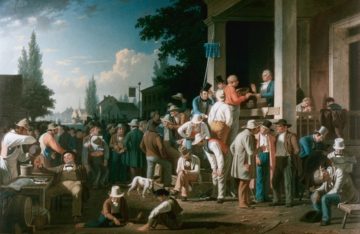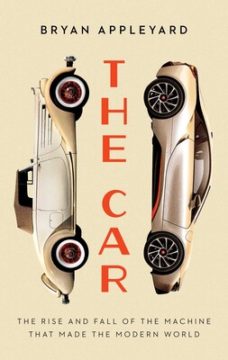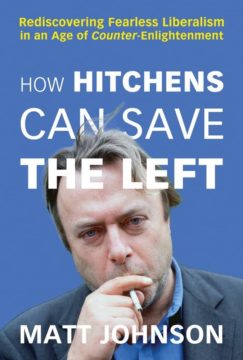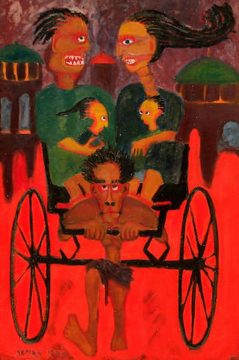Equinox
Dear child of the near future,
here is what I know—hawks
soar on the updraft and sparrows always
return to the seed source until they spot
the circling hawk. Then they disappear
for days and return, a full flock,
ready. I think we all have the power
to do what we must to survive.
One day, I hope to set a table, invite you
to draw up a chair. Greens steaming garlic.
Slices of bread, still warm. Honey flecked with wax,
and a pitcher of clear water. Sustenance for acts
of survival, for incantations
stirring across our tongues. Can we climb
out of this greedy mouth,
disappear, and then return in force?
My stars are tucked in my pocket,
ready for battle. If we flood
the streets with salt water, we can
flood the sky with wings.
by Tamiko Beyer
from Split This Rock
listen as Tamiko Beyer reads “Equinox”.

 Hundreds of scientists around the world are looking for ways to treat heart attacks. But few started where Hedva Haykin has: in the brain. Haykin, a doctoral student at the Technion — Israel Institute of Technology in Haifa, wants to know whether stimulating a region of the brain involved in positive emotion and motivation can influence how the heart heals.
Hundreds of scientists around the world are looking for ways to treat heart attacks. But few started where Hedva Haykin has: in the brain. Haykin, a doctoral student at the Technion — Israel Institute of Technology in Haifa, wants to know whether stimulating a region of the brain involved in positive emotion and motivation can influence how the heart heals. You’ve probably heard of the famous Trolley case. Here is one version: suppose a runaway trolley is about to hit five workers who, by accident, happen to be working on the track. The only way to prevent their death is by pushing a switch that will redirect the trolley onto another track. Unfortunately, there is another worker on this sidetrack who will be killed if the switch is pushed. The question: Is it permissible to push the switch, saving five people but killing one?
You’ve probably heard of the famous Trolley case. Here is one version: suppose a runaway trolley is about to hit five workers who, by accident, happen to be working on the track. The only way to prevent their death is by pushing a switch that will redirect the trolley onto another track. Unfortunately, there is another worker on this sidetrack who will be killed if the switch is pushed. The question: Is it permissible to push the switch, saving five people but killing one? What a week we just had! Each morning brought fresh examples of unexpected sassy, moody, passive-aggressive behavior from “Sydney,” the internal codename for the new chat mode of Microsoft Bing, which is powered by GPT. For those who’ve been in a cave, the highlights include: Sydney
What a week we just had! Each morning brought fresh examples of unexpected sassy, moody, passive-aggressive behavior from “Sydney,” the internal codename for the new chat mode of Microsoft Bing, which is powered by GPT. For those who’ve been in a cave, the highlights include: Sydney  In America, so the myth goes, freedom favors the bold and ambitious individual. From Benjamin Franklin to Steve Jobs, our national mythology has lionized and celebrated bright, plucky, self-motivated characters who work hard to realize innovative ideas. Though born and raised in families, communities, and other collectives, the story goes, these singular personalities rise above the crowd, buoyed by the protected freedoms and rights that American laws have conferred and intent on filling the public space with their own ballooning potential. Those who succeed do so of their own volition, and those who fail prove themselves simply incapable. America is, in other words, the world’s only true meritocracy.
In America, so the myth goes, freedom favors the bold and ambitious individual. From Benjamin Franklin to Steve Jobs, our national mythology has lionized and celebrated bright, plucky, self-motivated characters who work hard to realize innovative ideas. Though born and raised in families, communities, and other collectives, the story goes, these singular personalities rise above the crowd, buoyed by the protected freedoms and rights that American laws have conferred and intent on filling the public space with their own ballooning potential. Those who succeed do so of their own volition, and those who fail prove themselves simply incapable. America is, in other words, the world’s only true meritocracy. To read Baker is to be infected by the desire to put every experience, however small, into words that describe it precisely. Having read a short stack of his novels by way of preparation for this review, I found myself considering pieces of refuse on the street with ferocious care. Grocery receipt, I thought, looking at a white scrap on the sidewalk, small purchase. Small store, too: you can tell from the purple ink. Big supermarkets use black ink nowadays. And so on, to the point where I had to turn off the tiny Nicholson Baker in my head, repeatedly, lest my attention be utterly absorbed by the world around me, leaving me paralyzed in the middle of a crosswalk. That’s one thing you can say about Baker: More than almost anyone writing today, he makes you look.
To read Baker is to be infected by the desire to put every experience, however small, into words that describe it precisely. Having read a short stack of his novels by way of preparation for this review, I found myself considering pieces of refuse on the street with ferocious care. Grocery receipt, I thought, looking at a white scrap on the sidewalk, small purchase. Small store, too: you can tell from the purple ink. Big supermarkets use black ink nowadays. And so on, to the point where I had to turn off the tiny Nicholson Baker in my head, repeatedly, lest my attention be utterly absorbed by the world around me, leaving me paralyzed in the middle of a crosswalk. That’s one thing you can say about Baker: More than almost anyone writing today, he makes you look. In Bryan Appleyard’s sweeping history of the automobile, The Car: The Rise and Fall of the Machine That Made the Modern World, he quotes a likely-apocryphal line from Henry Ford that is too good not to include. A journalist interviewing the aged industrialist “suggested that perhaps his views were now out of step with the modern age. ‘Young man,’ Ford replied, ‘I invented the modern age.’”
In Bryan Appleyard’s sweeping history of the automobile, The Car: The Rise and Fall of the Machine That Made the Modern World, he quotes a likely-apocryphal line from Henry Ford that is too good not to include. A journalist interviewing the aged industrialist “suggested that perhaps his views were now out of step with the modern age. ‘Young man,’ Ford replied, ‘I invented the modern age.’” In 1870 the American Independent ran an article from
In 1870 the American Independent ran an article from  In a letter he wrote in 1884, Mark Twain lamented that ‘Telephones, telegraphs and words are too slow for this age; we must get something that is faster.’ We should (in the future) communicate, he said, ‘by thought only, and say in a couple of minutes what couldn’t be inflated into words in an hour and a-half.’
In a letter he wrote in 1884, Mark Twain lamented that ‘Telephones, telegraphs and words are too slow for this age; we must get something that is faster.’ We should (in the future) communicate, he said, ‘by thought only, and say in a couple of minutes what couldn’t be inflated into words in an hour and a-half.’ China’s production of staple food crops such as wheat and corn could become a net carbon sink if farmers start widely applying biochar to soil.
China’s production of staple food crops such as wheat and corn could become a net carbon sink if farmers start widely applying biochar to soil. British-American journalist, essayist, author, and human bulldozer Christopher Hitchens intimidated nearly everyone who encountered him, whether in print, on television, or on a debate stage. “He likes the battle, the argument, the smell of cordite,” his best friend and novelist Martin Amis once observed. Nobody ever beat Hitchens in argument, not even when he was wrong.
British-American journalist, essayist, author, and human bulldozer Christopher Hitchens intimidated nearly everyone who encountered him, whether in print, on television, or on a debate stage. “He likes the battle, the argument, the smell of cordite,” his best friend and novelist Martin Amis once observed. Nobody ever beat Hitchens in argument, not even when he was wrong. But Carne-Ross is more than just a polemicist, and the book aims at more than just critique. The title alone belies this, as explained by a brief etymology on the cover page: “INSTAURATION: ‘1.… Restoration, renovation, renewal. 2. Institution, founding, establishment. Obs.’ OED.” (The inclusion of the Oxford English Dictionary’s finding that the term is obsolete is deployed by Carne-Ross as a gesture toward his foundational belief that much of the wisdom that is needed today is hidden, like a pearl in a rough oyster, within the ostensibly obsolescent detritus of the past.) The opening essay establishes the problem and clears the ground, but the essays that follow are for the sake of construction. They are closely reasoned, erudite, and above all inspired readings of poetry ancient and modern: on how Pindar’s sixth Olympian ode shows us how, in a culture “obsessed with the theme of solitary suffering,” we might “learn a way back to a poetry of celebration”; on how Sophocles’s Trakhiniai unsettles our habitual historicism and invites us to ask anew the question about man’s relation to nature; on how reading Dante after the twilight of Christendom makes visible the narrowness of our (post)modern hermeneutic situation, and beckons us to move beyond it; on Luis de Góngora and the curious loss of Renaissance literature after modernism; on Giacomo Leopardi as a reluctant modern, uncomfortable on the cusp of the new disenchanted age and mourning “the lost holiness of earthly life.”
But Carne-Ross is more than just a polemicist, and the book aims at more than just critique. The title alone belies this, as explained by a brief etymology on the cover page: “INSTAURATION: ‘1.… Restoration, renovation, renewal. 2. Institution, founding, establishment. Obs.’ OED.” (The inclusion of the Oxford English Dictionary’s finding that the term is obsolete is deployed by Carne-Ross as a gesture toward his foundational belief that much of the wisdom that is needed today is hidden, like a pearl in a rough oyster, within the ostensibly obsolescent detritus of the past.) The opening essay establishes the problem and clears the ground, but the essays that follow are for the sake of construction. They are closely reasoned, erudite, and above all inspired readings of poetry ancient and modern: on how Pindar’s sixth Olympian ode shows us how, in a culture “obsessed with the theme of solitary suffering,” we might “learn a way back to a poetry of celebration”; on how Sophocles’s Trakhiniai unsettles our habitual historicism and invites us to ask anew the question about man’s relation to nature; on how reading Dante after the twilight of Christendom makes visible the narrowness of our (post)modern hermeneutic situation, and beckons us to move beyond it; on Luis de Góngora and the curious loss of Renaissance literature after modernism; on Giacomo Leopardi as a reluctant modern, uncomfortable on the cusp of the new disenchanted age and mourning “the lost holiness of earthly life.” THERE ARE FOUR FAUVIST FIGURES
THERE ARE FOUR FAUVIST FIGURES